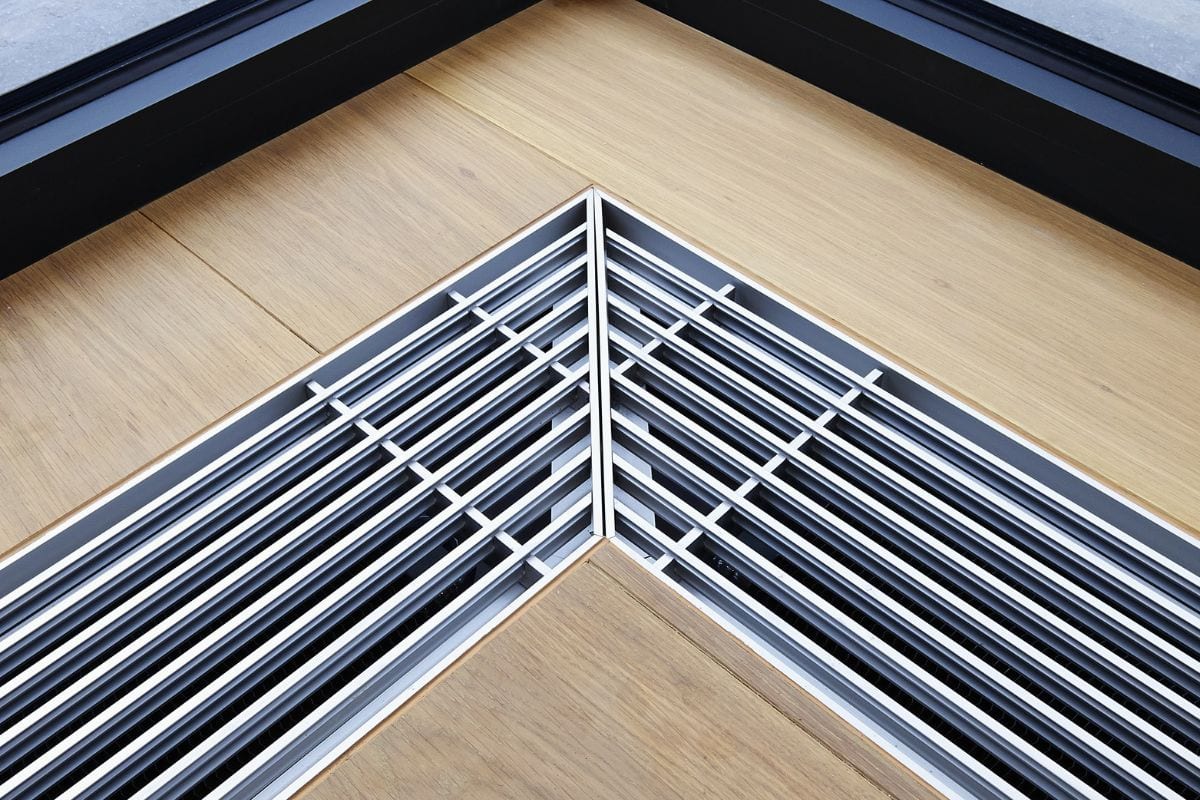Toe kick heaters are popular heating options for compact floorplans and remodels. Since you are interested in maybe installing a toe kick heater, you might be wondering if the noisy reputation they have is true. In this post, we combine industry professional knowledge and up-to-date research to answer your question.
New and properly installed toe kick heaters are not noisy at all. However, newer toe kick heaters will only function silently if they are properly installed and maintained. Further, older models of toe kick heaters may have been loud initially and older toe kick heaters are prone to becoming noisy over time.
Keep reading the rest of this post for a rundown on the noise levels of toe kick heaters. Then we'll cover why toe kick heaters are noisy and how to troubleshoot and fix common causes of the nosie. Finally, we'll answer several questions related to the topic of this post and provide an additional reading list.
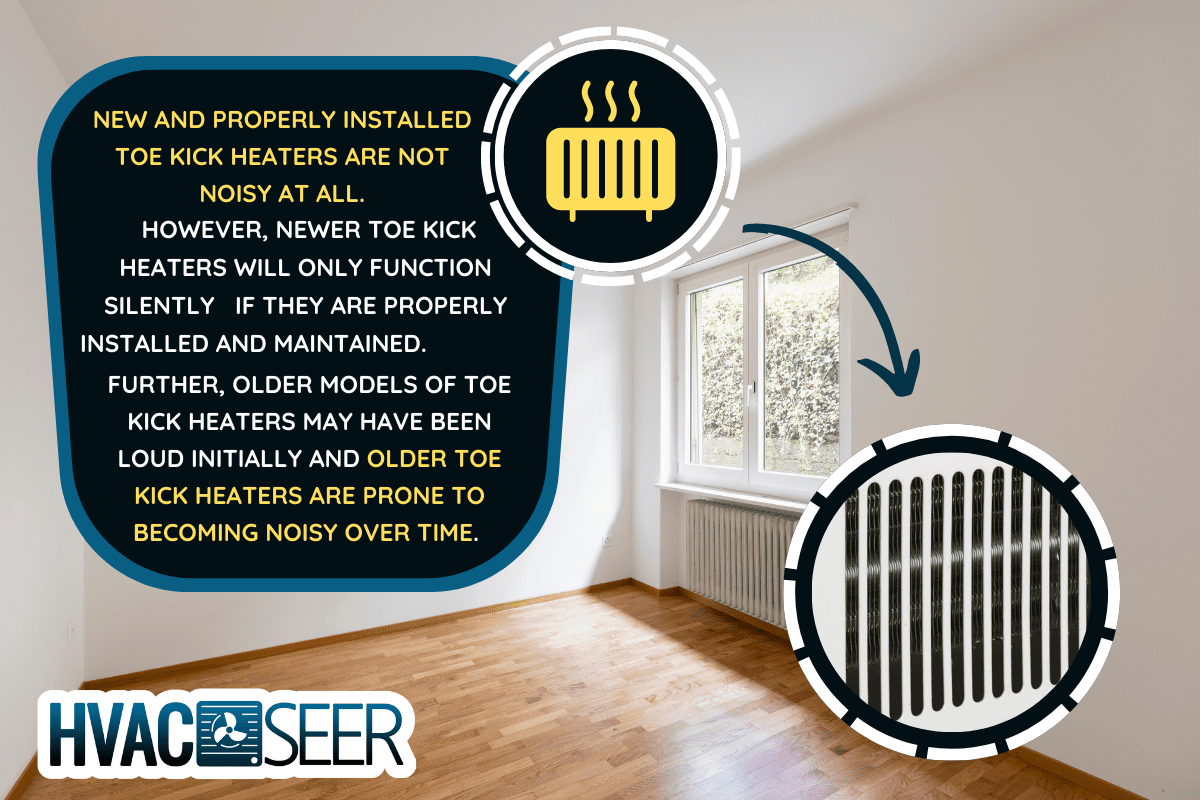
Are Toe Kick Heaters Noisy?
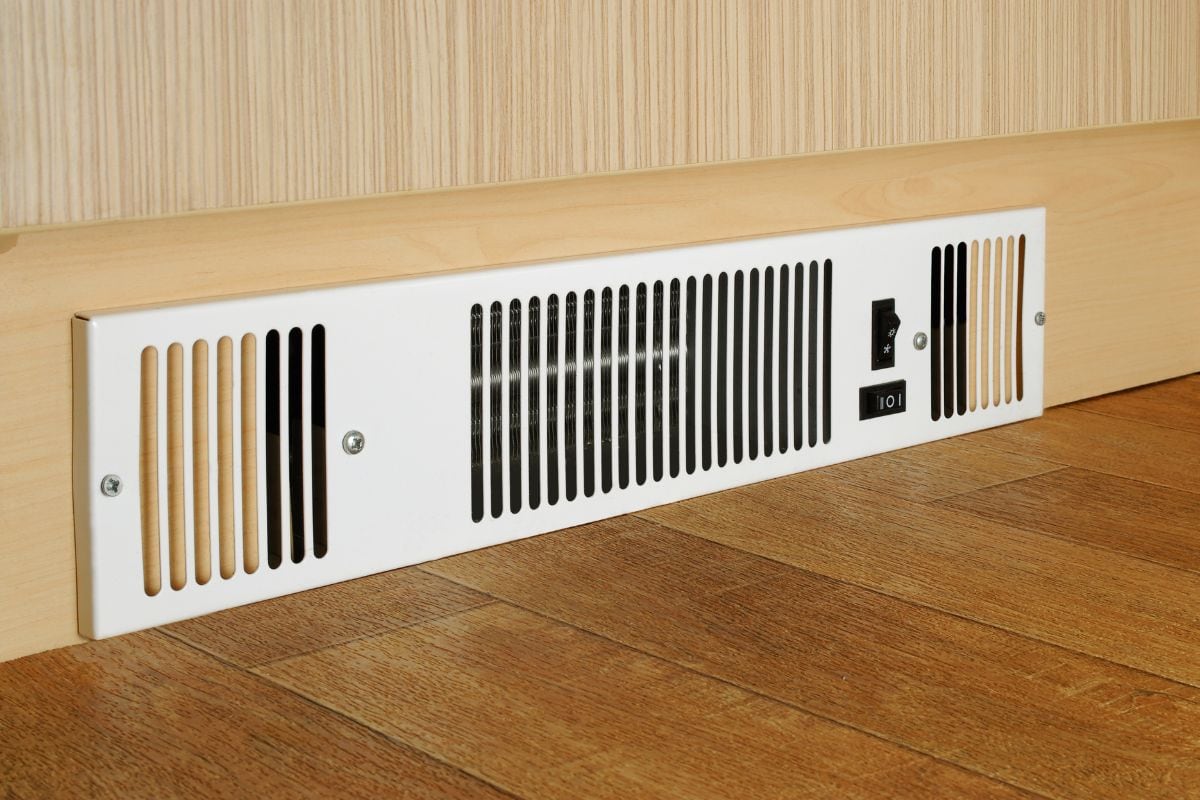
As mentioned above, new and properly installed toe kick heaters do not live up to their reputation as noisy heaters. While they all do make a small amount of noise as their fan spins and pushes the hot air out into the room, the noise is so slight as to be inaudible and definitely not annoying.
In fact, toe kick type heaters generally last 15 to 25 years before they need to be replaced. Often, these heaters fail not because they stop producing heat but rather because they become too noisy.
To learn more about why toe kick heaters make noise and how to take steps to reduce that noise, read the following subsections.
Why Toe Kick Heaters Sometimes Make Noise
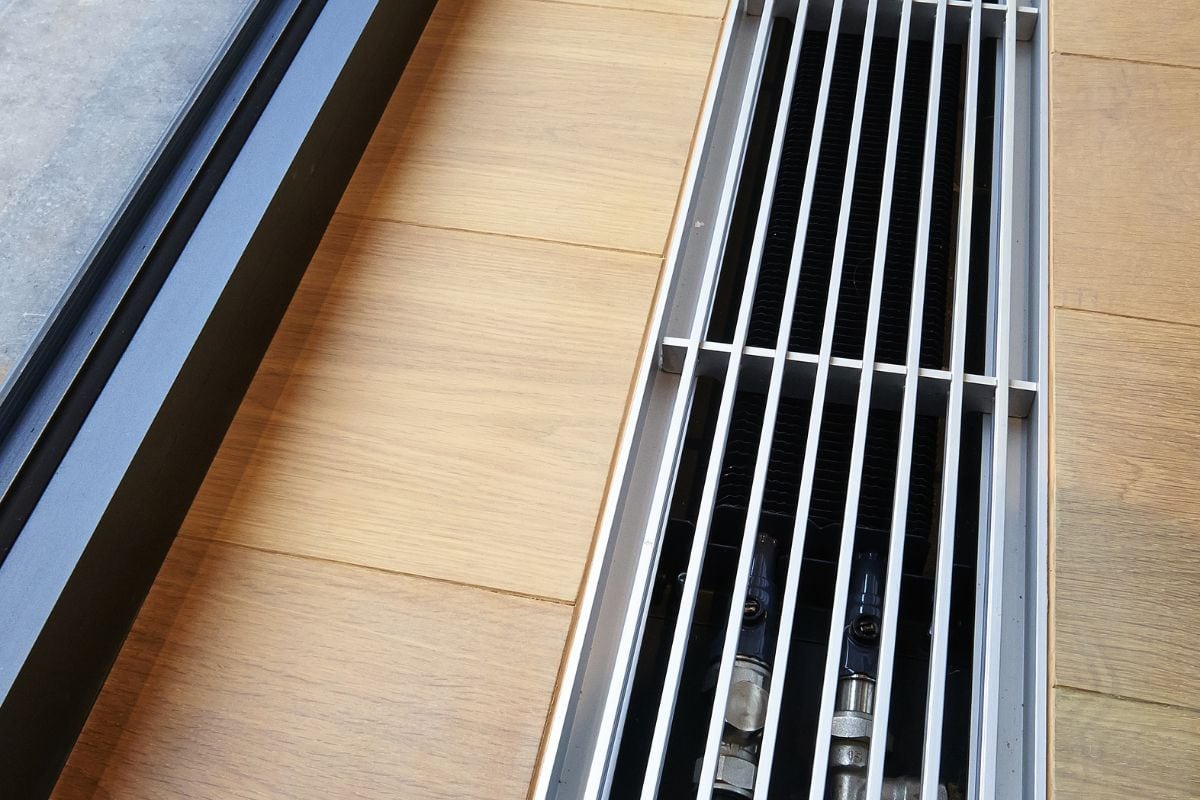
To understand why toe kick heaters make noise, it is useful to first get a little background information on these appliances. In general, toe kick heaters are small electric heaters that are almost entirely self-contained. All they require is an electrical power hookup and adequate space.
Specifically, toe kick heaters are a type of cadet heater that is narrow enough to fit in the toe kick space under a cabinet. The toe kick is the space between the floor and the cabinet that is usually set back further than the cabinet face, which gives the users room for their toes.
Whether you have a toe kick heater or another type of cadet heater, they run on electric resistance. That is to say, electricity is run through an element that heats up. Then, that heat is blown out into the space or room with a small electric fan.
Fan or fan components are almost always the source of the noise. In general, the noise of toe kick heaters comes from four sources. These are bad or worn-out bearings, clogged fans/grates, entire assembly fan-induced wobble, and/or overheating issues.
In the next several subsections, we'll cover these four sources of noise and provide recommendations for how to reduce and remove the noise altogether.
Bad Or Worn-Out Bearings
Inevitably, the toe kick fan's bearings will start to wear out. Bearings are the part of the heater that connects the spinning fan to the rest of the stationary unit. When these bearings wear out, the fan and the fan housing no longer snugly and smoothly fit.
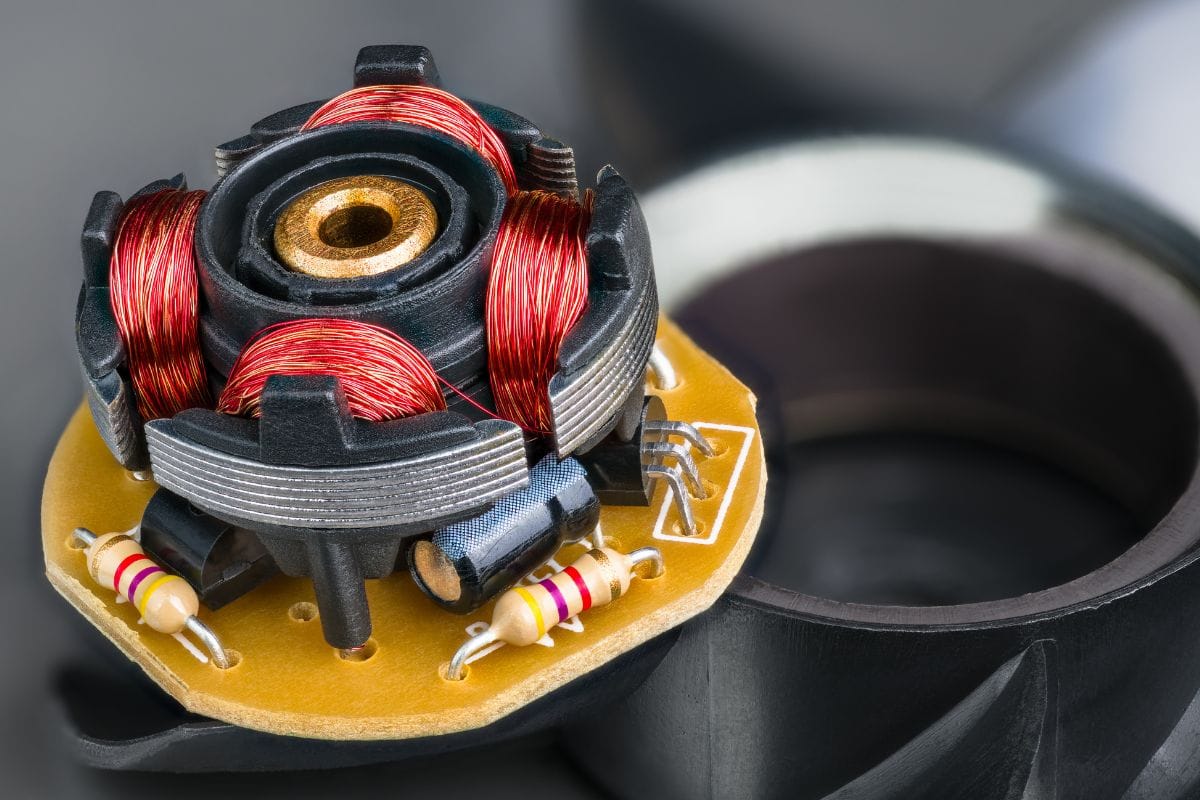
This poor fit can lead to a wobbling fan or contact between fan parts not intended to rub together. In turn, this leads to annoying clunking. or, more commonly, a whining noise. Usually, these noises will start out relatively quiet but will get worse and worse with time.
How To Fix Worn Out Bearings
Of all the issues with toe kick heaters, worn-out bearings are the most common issue. Unfortunately, this problem is also very difficult to fix, and most service professionals will recommend that you replace the entire unit rather than going to the trouble of replacing the bearings alone.
In fact, many units are designed with welded assemblies that do not allow a service technician to make a bearing replacement at all. Either way, if you hear a whining noise associated with your toe kick heater, it is probably time to call an HVAC professional or go ahead and budget for replacing the unit.
Clogged Fans Or Grates
The next culprit is clogged fans or grates. If the fan is clogged with dust and dirt, it may be physically scraping on built-up gunk as it turns, which creates a noise. Other times, the air may be restricted as it is forced to exit the grate opening of the toe kick heater. This can also cause noise.
How To Fix Clogged Fan Or Grates
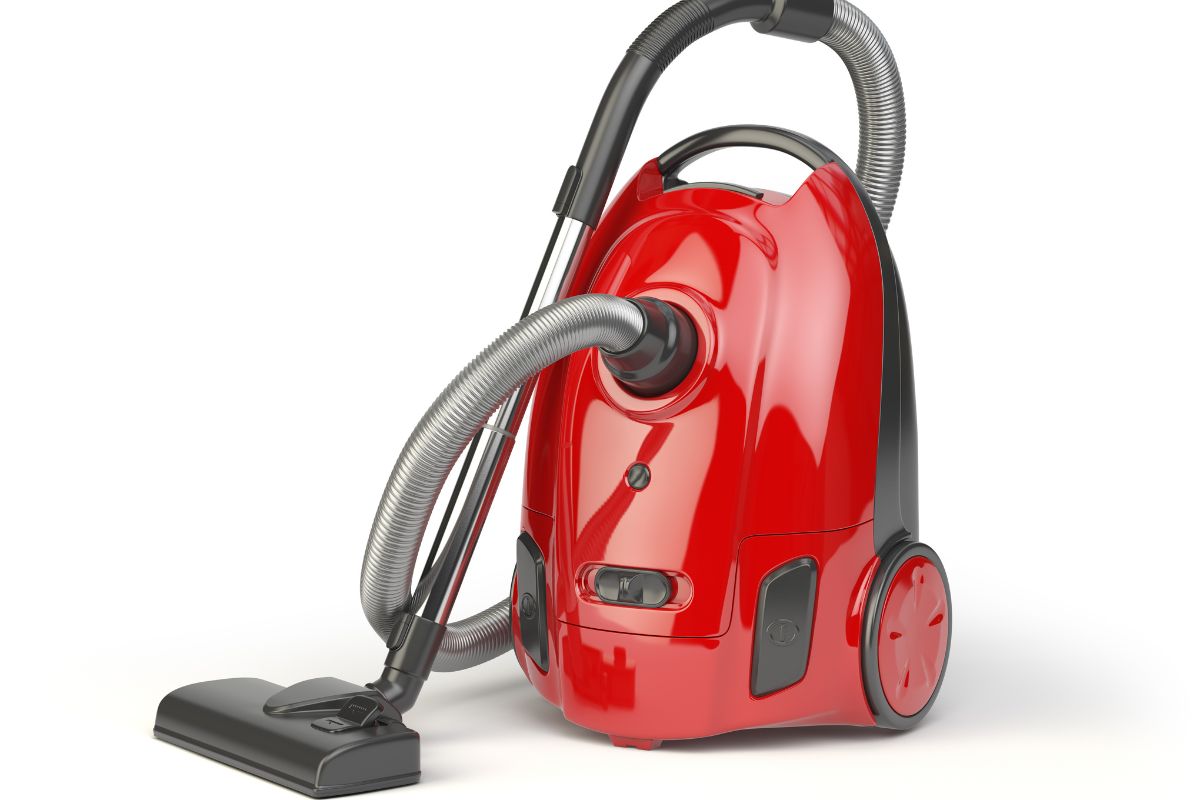
Fortunately, if clogging is the reason you have toe kick heater noise, you are in luck. With a vacuum, you can generally clean the entire unit and get it back into working quiet order. Sometimes, you may want to use a light soap and water solution as well. Do be careful, and let the unit dry before repowering it.
Fan-Induced Assembly Wobble
Sometimes, the spinning movement of the fan may cause the entire toe kick heater to shake or wobble in its housing or against its housing. This noise is usually less consistent but no less annoying.
Wobbling assembly movement may be because of poor initial installation, natural home settling, wood shrinking over time, or slowly loosening fasteners.
How To Fix Assembly Wobble
Like a dirty toe kick heater, assembly wobble is often fixable at home. All you need to do is to resecure the toe kick heater in its housing area.
Click here for heat-resistant caulk from Amazon.
To accomplish this, consider using heat-resistant caulk. First, remove the toe kick heater cover. Now, locate where there is space between the toe kick heater and the housing. Fill that gap with caulk. Be sure to not overfill the gap, and allow the caulk to fully dry before repowering the heater.
Other options include using backer rod and/or screwing the toe kick heater more securely to the housing.
Overheating
Older toe kick heaters were sometimes not equipped with governing mechanisms that shut the unit down when the internal workings begin to get too hot. Additionally, these governing mechanisms can fail over time. Other times, if a toe kick heater is left to get too dirty, the dirt may ultimately lead to overheating.
Finally, toe kick heaters often overheat if their fans stop working properly. This not only can lead to noise but can also cause house fires. Therefore, if you have a toe kick heater with a fan that is not spinning, stop using that heater immediately.
Whatever the cause, overheating can warp and damage components including the bearings and fan blades. Any of these issues can lead to problems that cause a noisy toe kick heater.
How To Fix Noise From Overheating
Unless you catch an overheating issue quickly, this problem is usually best left to HVAC professionals. These technicians will be able to identify what has overheated and advise whether the problem can be fixed or if the unit should be replaced.
Additional Questions
In these subsections, we'll answer several questions related to the topic of this post.


